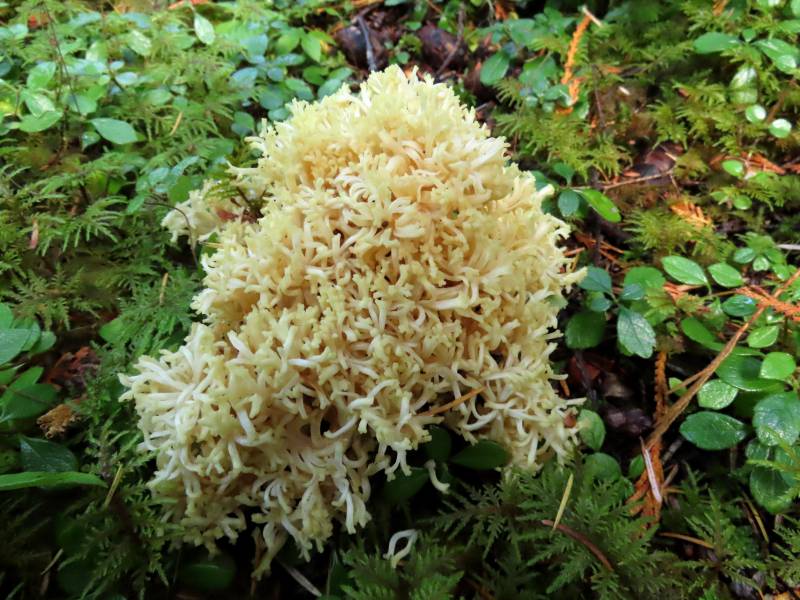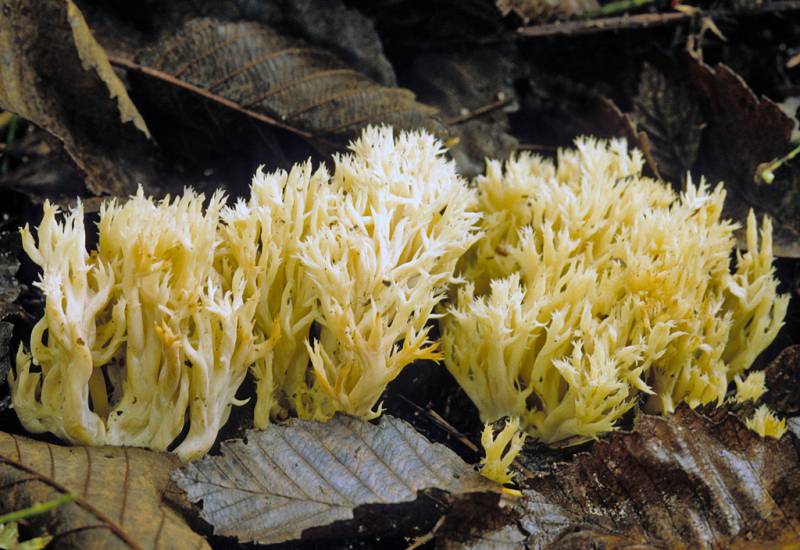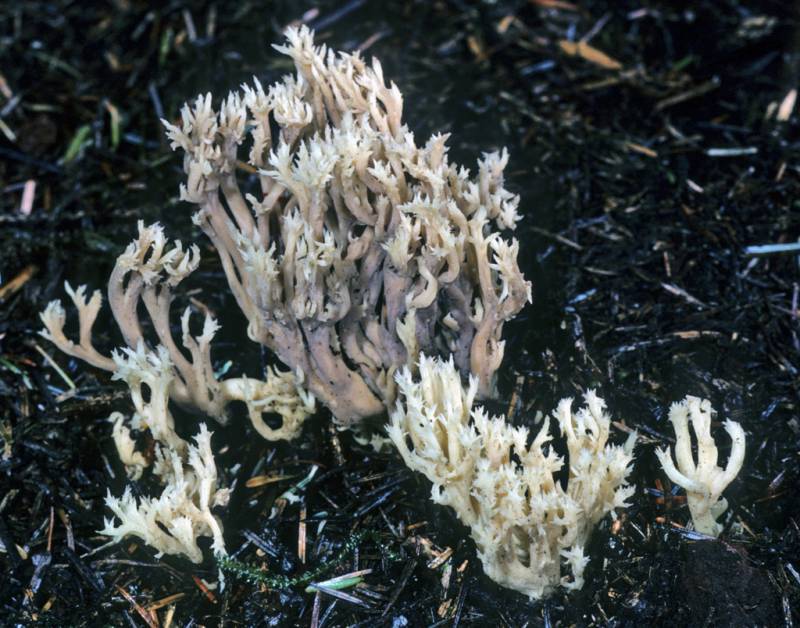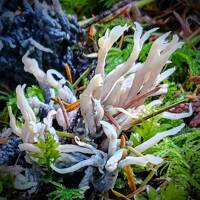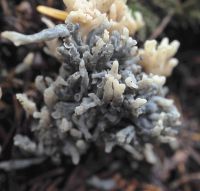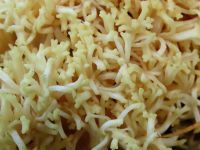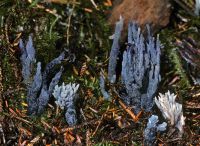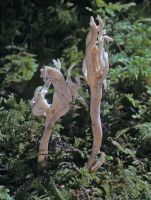Habitat: Woodlands
Conservation Status: Not of concern
Edibility: Not edible
Not edible
Clavulina cristata (= C. coralloides) is a widespread and very common whitish to buff coral with pointed or toothed branch tips and white spores borne on two-spored basidia. Its shape is maddeningly variable, often making it difficult to recognize. It is ectomycorrhizal and usually occurs on soil, but at times can be found on well-rotted wood Molecular analyses, as well as microscopic features, suggest that C. cristata is closely related to the chanterelles. Two similar species are C. cinerea, with lilac-grayish coloration, wrinkled branches, and less developed branching, and C. rugosa, with wrinkled (rugose) branches and only limited branching, especially at the tips. These characters are not clear-cut and microscopic characters differ little among the three species, so one often encounters forms that are difficult to assign to one or another of them. The situation is further complicated by the tendency for C. cristata to be infected by the ascomycete Helminthosphaeria clavariarum. It produces gray to black colors in the clavulina (caused by formation of its minute fruitbodies) and seems to reduce branching of the tips, both of which can lead to confusion with C. cinerea.
Sources: Trudell, Steve and Joe Ammirati. Mushrooms of the Pacific Northwest. Portland, Timber Press, Inc. 2009. Roberts, Peter and Evans, Shelley. The Book of Fungi. Chicago, The University of Chicago Press, 2011.
PNW Herbaria: Specimen records of Clavulina coralloides in the Consortium of Pacific Northwest Herbaria database
CalPhotos: Clavulina coralloides photos

